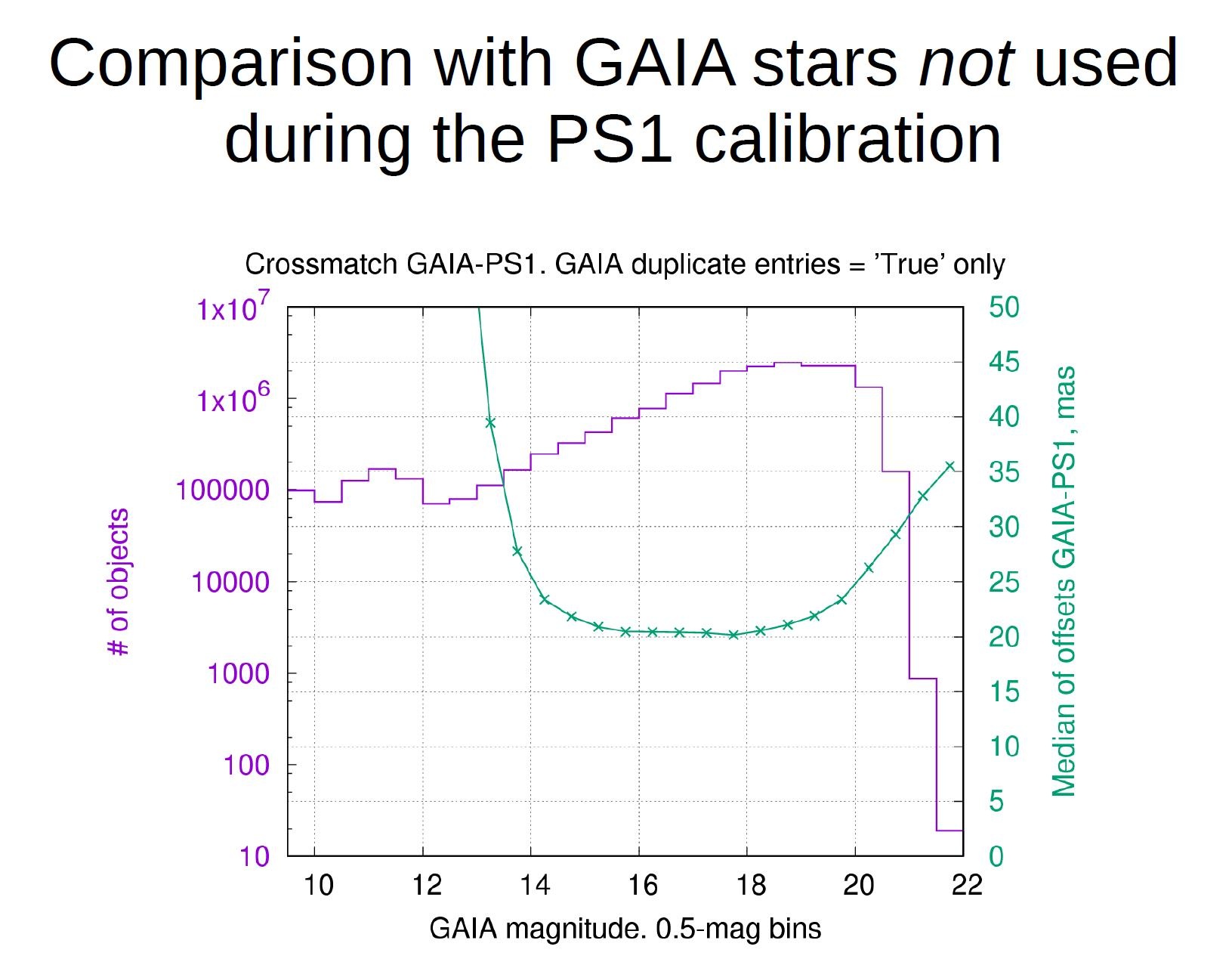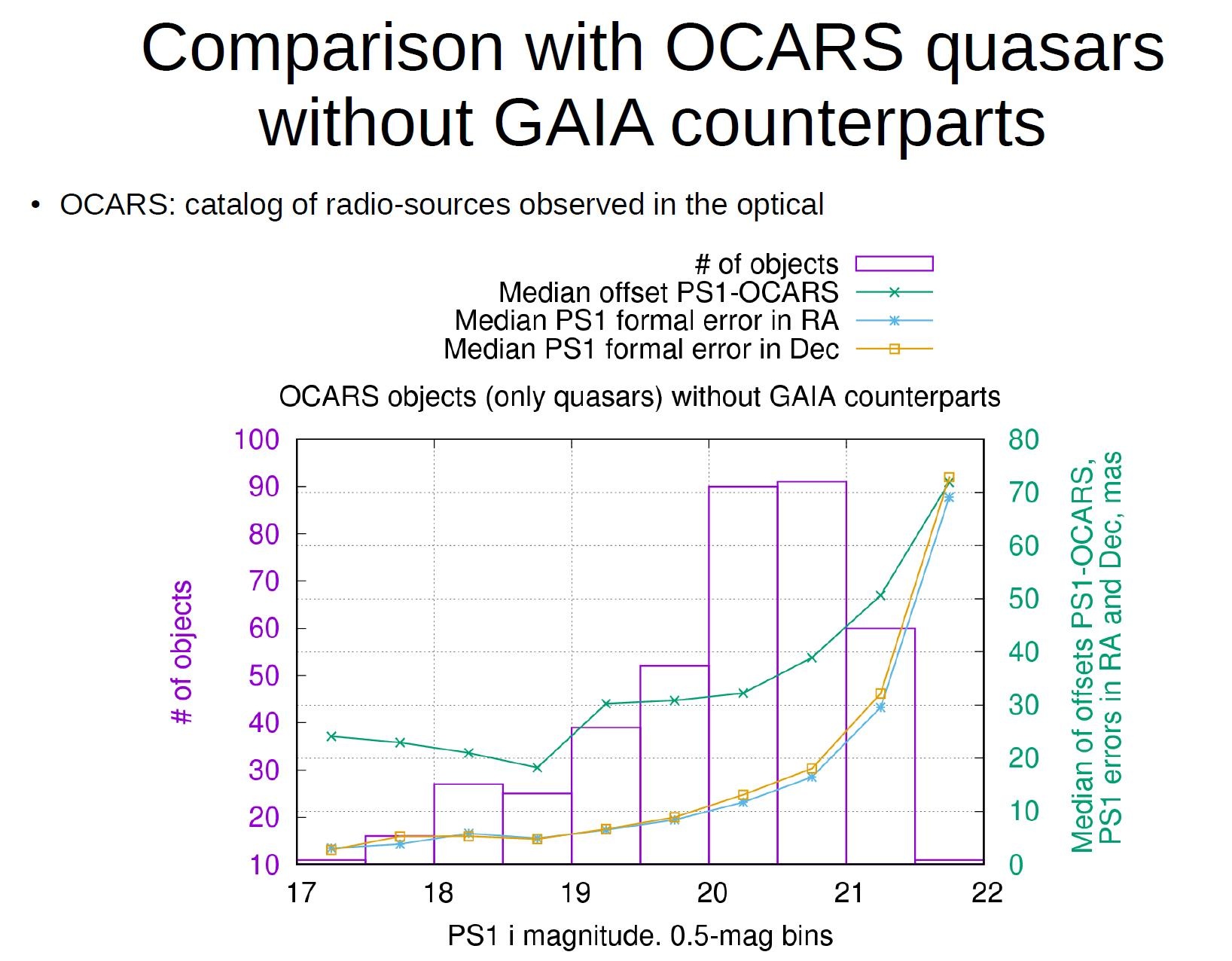Page History
...
An independent test of sources with Gaia data that were not used in the recalibration was carried out by Makarov and collaborators (V. Makarov, C. T. Berghea, & J. H. Frouard, Technical Memorandum, AADD USNO, 2017). They consider the over 19 million stars for which the duplicated_source flag is set in the Gaia DR1 catalog for which a Gaia-corrected position is available in PanSTARRS DR1. Their results, summarized in the first plot below, suggests that the residual systematic uncertainties for recalibrated PanSTARRS positions is closer to 20 mas (1-sigma, 2-d) for sources with Gaia magnitudes between G=15 and G=18, increasing for fainter magnitudes to about 35 mas at the Gaia magnitude limit (G=21.7). Errors are larger towards brighter magnitudes as well, possibly because saturation and proper motion effects become significant in the PanSTARRS measurements.
The majority of the sources in this category have a value of the astrometric_excess_noise parameter in Gaia DR1 below 1 mas (median value 0.61 mas). The astrometric_excess_noise parameter estimates the magnitude of residuals per observation beyond the nominal measurement errors after the single-object astrometric fit (see Lindegren et al 2016, A&A 595, 4 for more details).
Makarov et al (2016) obtain similar results from a comparison with quasars with high-quality radio positions but without a Gaia counterpart, although the number of sources in this case is much smaller.
It is thus suggests that the residual systematic uncertainties for recalibrated PanSTARRS positions is closer to 20 mas (1-sigma, 2-d) for sources with Gaia magnitudes between G=15 and G=18, increasing for fainter magnitudes to about 35 mas at the Gaia magnitude limit (G=21.7). Errors are larger towards brighter magnitudes as well, possibly because saturation and proper motion effects become significant in the PanSTARRS measurements. It is likely that systematic uncertainties of 20 mas (1-sigma, 2-d) apply to all mean objects in PanSTARRS DR1, with possibly larger uncertainties in regions with a scarcity of sources in common between Gaia and PanSTARRS.
In addition to this systematic uncertainty, each mean source has a statistical measurement uncertainty reported in the following fields in the ObjectThin table:
...
As an additional caveat, stars with high proper motion (> 1"/yr) are likely to be split into multiple mean objects; proper astrometric solutions for such sources require use of individual detections (which will be available in DR2) and epoch-aware co-processing. Similarly, objects with high proper motion might appear elongated in stacked data and may not be properly identified as point sources. TBD: produce plot of stack vs mean positions for a small area, and quantify 2MASS residuals better. Produce useful plots of residuals. Include USNO plot after asking permission. Credit USNO-led comparison explicitly if appropriate.
PS1 photometry
What filters did PS1 use?
...


